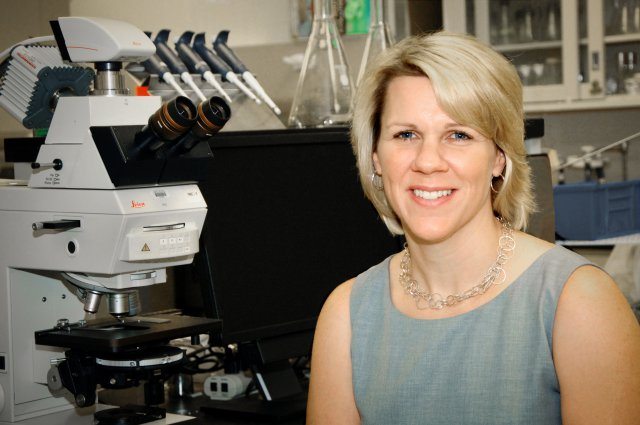Biological agents remain a persistent threat to America and its Soldiers. U.S. Army scientists are researching new technologies to counter bioweapons in order to keep the nation safe.
Mary M. Wade, a supervisory biologist with the U.S. Army Research, Development and Engineering Command, described her team’s work in the areas of detection and decontamination.
“Biodefense research is vital to continuing to protect the warfighter and the nation from potential threats,” Wade said. “We have to be ready. We have to be able to respond, counter threats, and detect threats.”
RDECOM’s Edgewood Chemical Biological Center leads the Army’s efforts in researching, developing, testing and evaluating solutions to defeat dangerous biological agents that can be used as weapons by America’s adversaries. Wade serves as acting chief of ECBC’s BioDefense Branch, where she leads 20 scientists.
DECONTAMINATION GEL APPLIED TO SURGICAL EQUIPMENT
Wade detailed a promising new technology that her team is evaluating for the Army to decontaminate biological threat agents.
ECBC signed a cooperative research and development agreement, or CRADA, this year with CBI Polymers to test a decontamination gel manufactured by the company, she said. The Defense Advanced Research Projects Agency is funding the program.
“The gel contains a disinfectant, and you can spray or paint it on objects or surfaces,” Wade explained. “It will kill and immobilize the agent within the gel. Once it dries, you can simply peel it off just like tape. It will remove and retain that threat agent.”
The Army could eventually use the gel to decontaminate surgical equipment, such as scalpels or forceps, she said.
For testing at ECBC, researchers are inoculating the surgical instruments with bacteria and then coating them with the gel to see how well it decontaminates the bacteria. The gel is not toxic and takes three to four hours to dry before it can be removed.
“This would eventually be for surgeons in the field,” she said. “They can print and develop surgical instruments [using 3D printers]. If they are not sterile or become contaminated, the decon gel is a product that could be used in the field.”
The decon gel has already been fielded for radiological decontamination, and testing will continue for one to two years before it is ready for biological applications. Scientists are determining which materials the gel can be applied to for biological decontamination.
SPECIALIZED TRAINING LEADS TO ARMY POSITION
Wade earned a bachelor of science in biology in 1997 at the University of Mississippi and a doctorate in microbiology in 2002 at Mississippi State University.
While studying tuberculosis as a postdoctoral fellow from 2002 to 2004 at the Johns Hopkins University School of Public Health, Wade gained specialized experience in a biosafety level 3 laboratory, or BSL-3.
Scientists working in a BSL-3 handle airborne agents that can cause illness and use respirators, personal protective equipment and engineering controls within the laboratory to avoid exposure. ECBC is home to one of 45 BSL-3 laboratories in the United States.
Although Wade anticipated working for the Centers for Disease Control and Prevention in Atlanta because of an interest in public health, her BSL-3 training led to a position with the Army. She started at ECBC as an on-site contractor in 2004 and then accepted a position as an Army civilian in 2007.
EXECUTING PROJECT FROM BEGINNING TO END
As a scientist in the laboratory, Wade said her greatest success was serving as a principal investigator, or PI, on a water-monitoring program. As a PI, she executed projects from beginning to end, and in some instances, saw a technology fielded for Soldier use.
“This was a great success and extremely rewarding,” she said. “We were evaluating technologies for detection of biological agents in water. This was one in particular where I was able to see an item fielded to Soldiers. We fielded a water-test kit that contains antibody-based handheld assays for detection of biological toxins in water. Soldiers can screen water before consumption to ensure it is safe to drink.”
“That was a rewarding program to see through fruition and see a fielded technology generated from research we had conducted,” she continued.
Wade emphasized that her research team is continually focused on the end user — the Soldier.
“Every day we are conducting research that yields data that is going into the development of new detection and decontamination technologies,” she said. “We help to equip our warfighter with better tools, technologies and information to detect and counter biological threats.”










